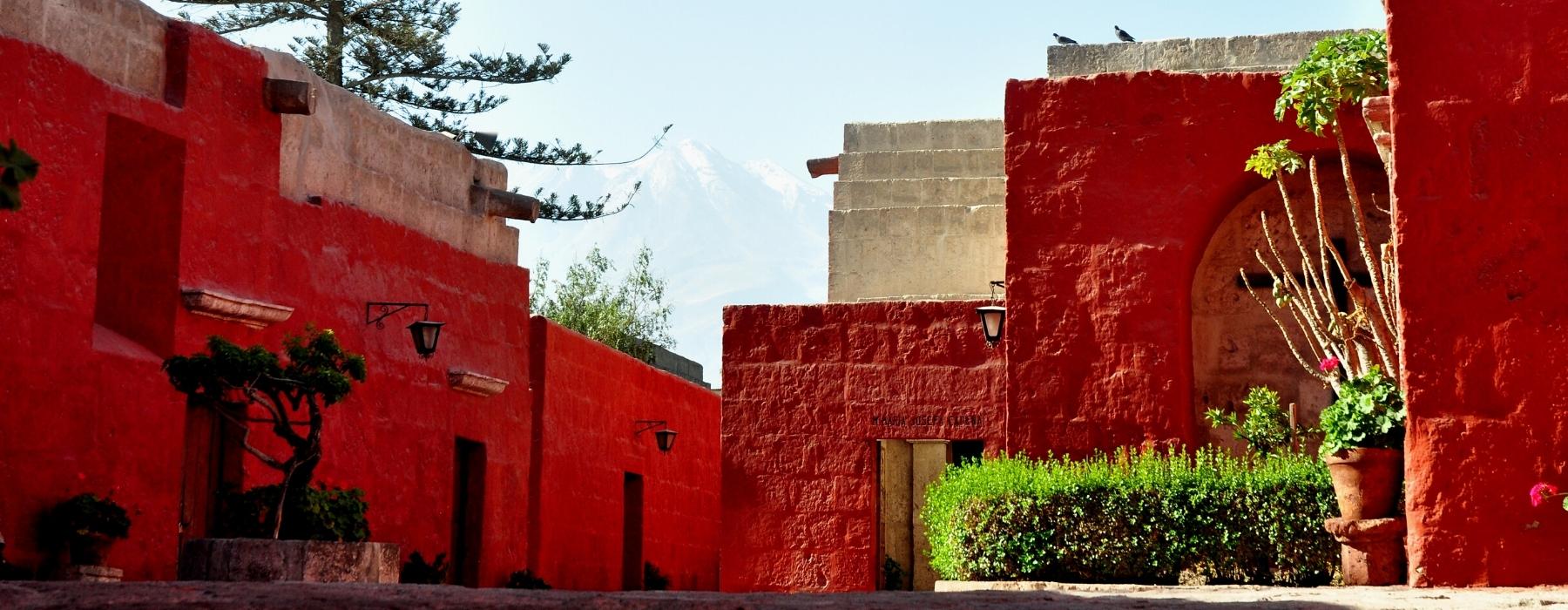
The Santa Catalina Convent is renowned worldwide as a colonial architectural masterpiece. The monastery is home to many complex rooms, beautiful plazas, ornate fountains and winding cobblestone streets. As one of the most popular attractions in Arequipa, this is not one to be missed during your visit. This great work of colonial architecture was a cloistered convent which dates back to the 16th century, this massive structure covers more than 20,000 km2 that you can explore. While the monastery once housed approximately 450 people, (both nuns and servants) there are now only approximately 20 nuns living in the northern corner of the building.
Catherine of Siena is the saint to whom this convent is consecrated. Here, silence has found its voice in the bright colors of the convent’s walls and the cobblestone passageways that converge at a beautiful square. As a citadel for women devoted to prayer, charity and the making of delicious desserts to tempt the palate, Santa Catalina is more than a convent; it is a crucible of secrets that visitors only glimpse as they wander through its buildings; secrets that will remain within the convent’s walls forever.
The monastery has been open to the public since 1970. Before that, it was home to a community of nuns but the people from Arequipa knew very little about it since they were not allowed to go inside.
While we recommend exploring the monastery with the aid of one of the multilingual, knowledgeable guides, you can also explore the monastery alone. The monastery is open two evenings a week so that visitors can roam the grounds in candlelight as the nuns would have done years ago.
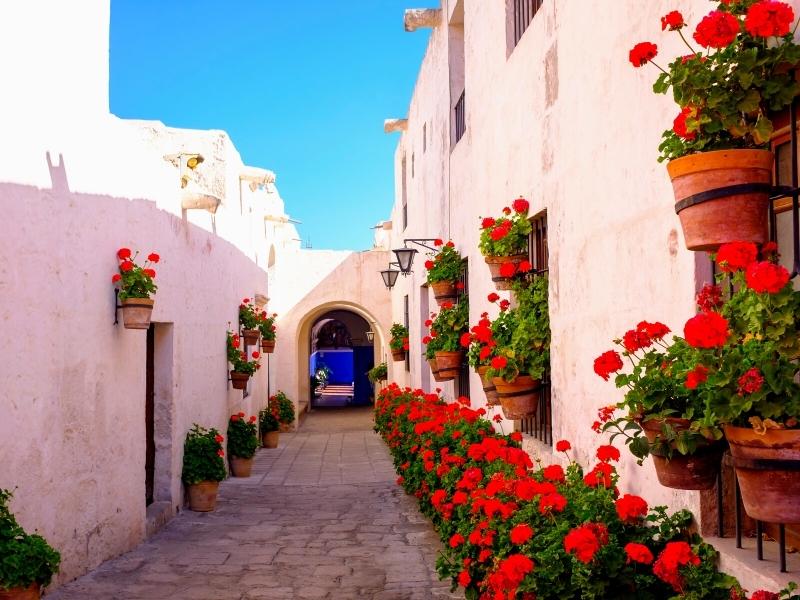
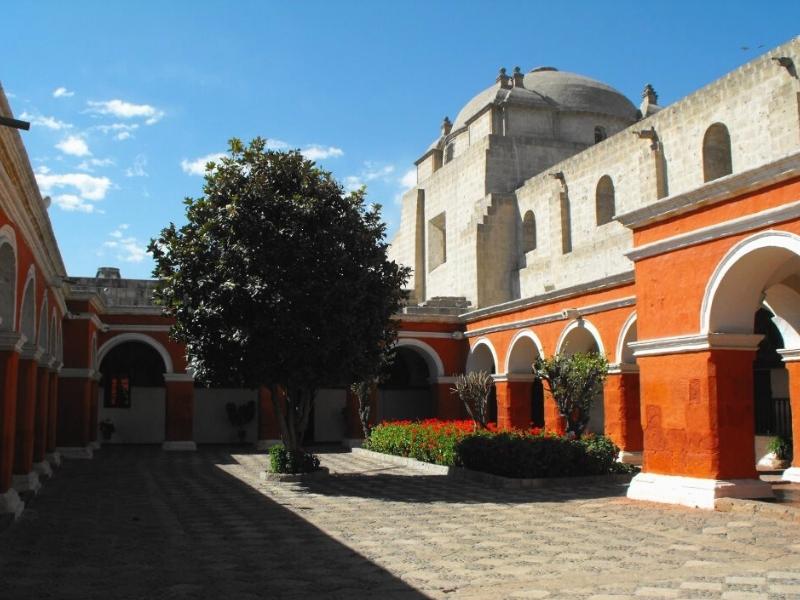
Marked by a rubber tree at its entrance, this was an area where nuns were required to swear a vow of silence and dedicate their lives to prayer and work. Nuns served as novices for 4 years, whereby their families had to pay a dowry of 100 gold coins per year. At the end of the 4 years, the novice could choose between entering into a full life of service or to leave the convent (bringing shame upon her family).

This was where nuns went after they graduated from novice. This cloister earned its name from the cluster of orange trees at its centre. Found in this area is the Profundis Room – A room where deceased nuns are mourned and their portraits line the walls. As you leave the orange cloister, down Córdova street, cells that served as living quarters for the nuns can be found. The cafe can also be found while leaving the orange cloister, serving fresh pastries and coffees.
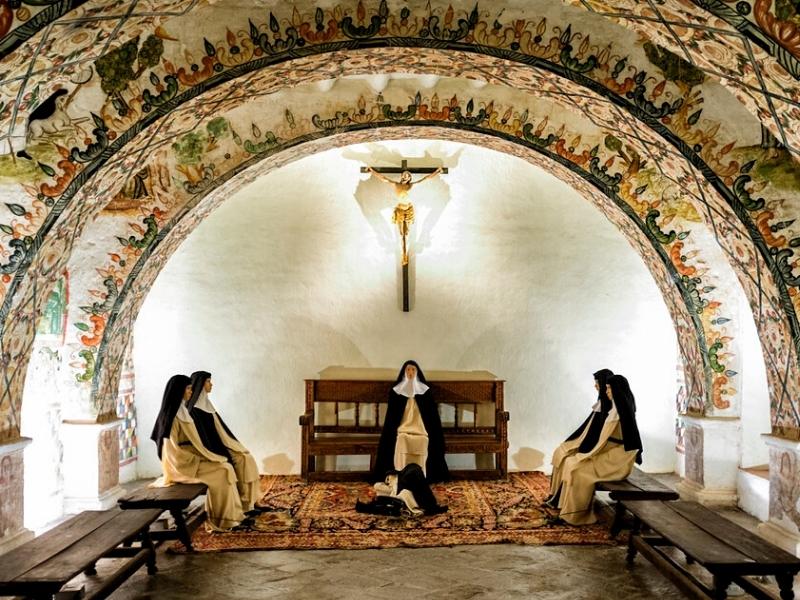
This cloister is bordered by the chapel and the art gallery. The gallery in the past was used a communal dormitory. This building was constructed in the shape of a cross, with the walls sporting murals of Jesus and The Virgin Mary.
Viewing The Santa Catalina Monastery provides the visitor with a deep understanding of what life was like in these types of monasteries hundreds of years ago. If you enjoy history or architecture, then you need to pay a visit to The Santa Catalina Monastery.
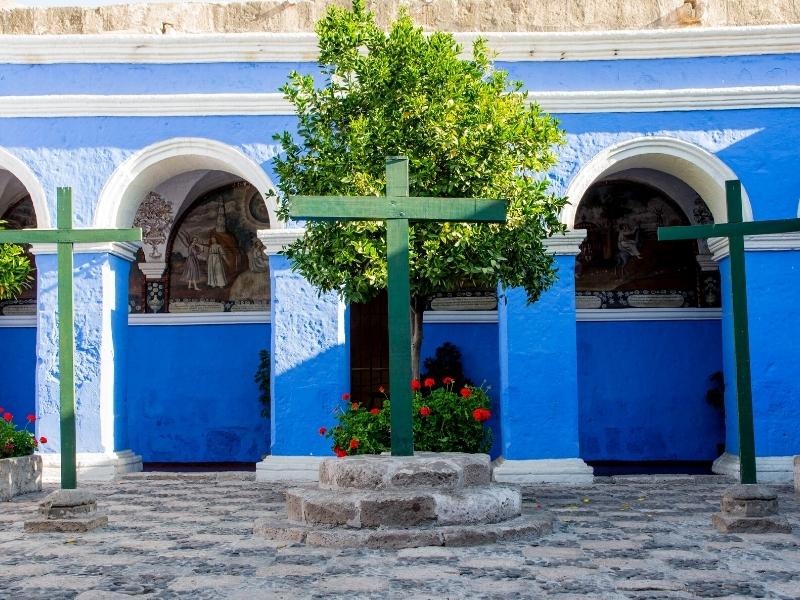
The Cloister of the Orange Trees, dates from 1738. It owes its name to the presence of orange trees. The three crosses located in the middle of the cloister are part of a tradition of the Santa Catalina Monastery, where the nuns represent the Passion of Christ every Good Friday of every year, the date on which it is closed to tourism.
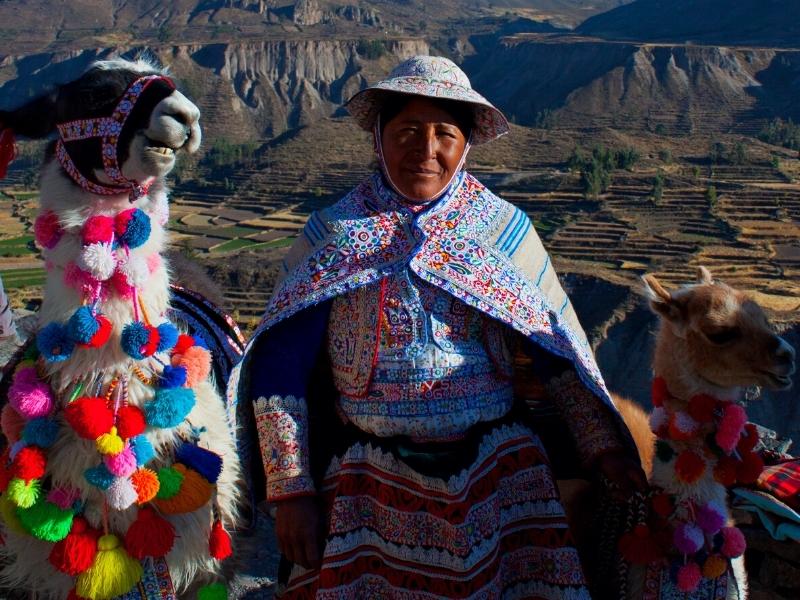
Feel the magic and the energy of Cusco and Machu Picchu, then continue to where the legend began – Lake Titicaca, to get off the beaten path and immerse yourself in the local culture and enjoy the peace and tranquility on the shores of the Lake.

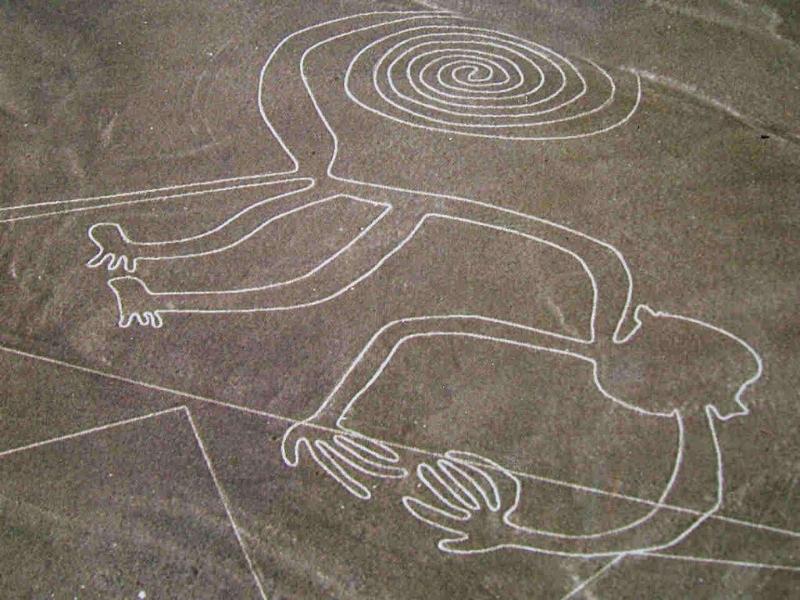
Visit Peru and discover its highlights from Lima to Cusco on an exciting journey that encompasses modern cities and ancient worlds. From the depths of the Colca canyon to the heights of the Andes and on to the unique islands of Lake Titicaca, be immersed in fascinating Peruvian culture while discovering its history buried deep within the walls of lost cities.

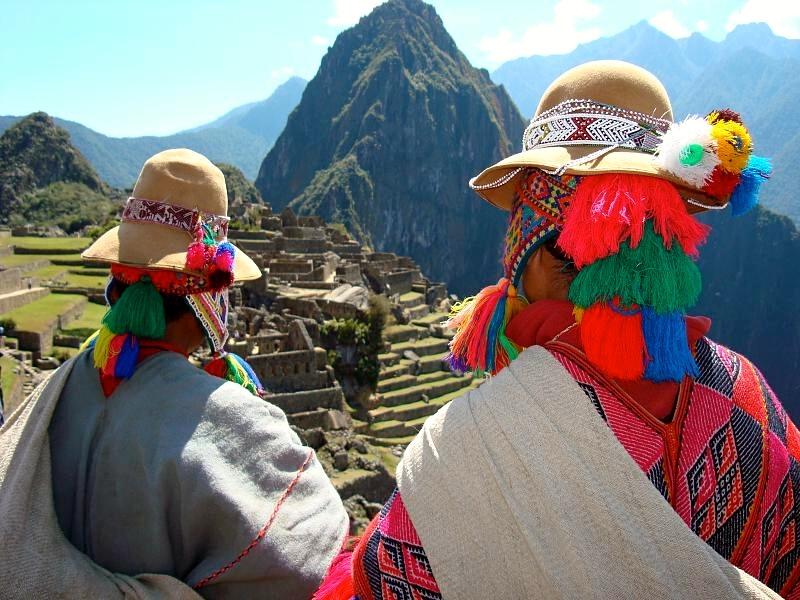
Colours of Peru calls to you with all the allure of the ancient and the mysterious. From the soaring peaks of the Andes to the lush Amazon Rainforest, from the pre-Colombian ruins in the mountains to the Spanish colonial mansions on the coast, 14 Days in Peru offers you exciting adventures and unique experiences.
